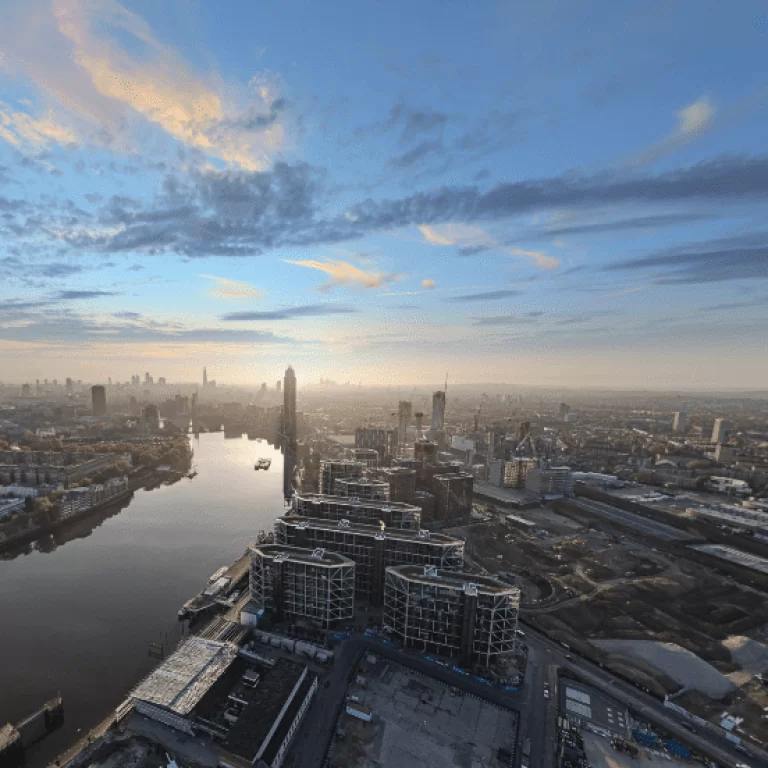
News Life in the round – 360° video and the future of moving images
As Geoffrey A. Fowler of The Wall Street Journal asked recently, “We experience life in the round, so why shouldn’t our pictures work that way, too?” The desire for capturing the world around us in the same way as we see the world around us is now easier to fulfil with developments in 360° video technologies.
360° video, also known as ‘immersive’ or ‘spherical’ videos are becoming an increasingly commercial component of photography, not only in the professional marketplace but for ‘prosumers’ and hobbyists, too. Social media platforms like Facebook now host immersive content, enabling 360° videos for viewing on a user’s News Feed and from mobile devices.
So what is 360° video? Essentially these are video recordings where every possible view is recorded at the same time, in a similar way to a real-world panorama but without the need to manually move the camera to capture the content.
The omnidirectional ability of the camera set-up allows for a 360° field of view that covers the entire sphere surrounding the equipment. Unlike a regular camera which usually has a field of view of approximately 180°, capturing light as it falls onto the focal point, a 360° camera rig allows for light to be captured from all directions, covering a spherical, and indeed, larger field of view. By widening the field of view massively, playback becomes a fully immersive experience – a form of virtual reality.
One of the major benefits of 360° video, then, is the interactive nature of the content that is produced. Users can now create their own narrative by using their fingertips to click and drag to adjust and control the direction of view.
As well as an increasing number of online platforms catering for the immersive experience that 360° video can provide – with popular online platforms such as YouTube and Facebook making it simple for users to browse, view and share content from mobile devices – there are also increasing numbers of accessories available to facilitate the capability of 360° video on smartphones. The Kogeto Dot 360° is one example of an attachment for iPhone devices that allows you to capture 360° panoramic video in HD using your device.
While products like these make 360° video more widely accessible, both in terms of their functionality on mobile devices and the innovative viewing experience that can be facilitated by such devices, they are limited in terms of the quality of image that they can provide. They continue to appeal to ‘prosumer’ and hobbyist markets, and push the boundaries of what can be achieved using relatively affordable equipment, but ultimately you get what you pay for.
High-end equipment can also be utilised to capture 360° video footage but requires multiple cameras that need to be mounted to a specialised rig in order to generate an omnidirectional view.
The advent of 360° video is becoming increasingly popular with use in more professional circles as the omnidirectional viewpoints lend themselves well to capturing the fullest and most complete imagery possible without the need to use multiple pieces of equipment. The beauty of 360° video is that the content is designed to be viewed on a 2D display and when utilised using the best in High Definition camera technology, the results are staggering and available to view on a screen of any size.
This is particularly beneficial to companies in the construction, leisure and entertainment industries where the size and scope of their projects can be showcased in full detail without compromising on quality. Bespoke 360° camera systems can be tailored to the individual needs of a particular project so as to garner the best possible visual narrative that can be utilised in highly competitive markets.
The potentialities of 360° video are developing further still with the rise in popularity of drone technology. The new heights and angles achieved by an unmanned aerial vehicle (UAV), unmatched by traditional methods and coupled with the ‘all round’ views captured by 360° cameras, can be used to capture footage that communicates the extreme scope of events through stunning aerial perspectives.
These capabilities can lend themselves well to construction projects in particular as the video footage obtained from 360° drones can then be used in order to generate online tools, such as virtual tours. Not only visually stunning, allowing the viewer to guide footage and explore the subject in considerable detail in all directions, these platforms work particularly well in terms of marketing. Users can view the progress of particular projects from an aerial perspective, with the interactive user interface allowing them to explore sites in depth and detail.
It appears that 360° degree videos are on the rise in both popular and commercial sectors and has revolutionised the ways in which we produce and interact with video. It can be assumed that the future of photography and video will be multidimensional and for professional companies especially, such advancements in technology mean that life in the round can be captured in optimum visual quality.